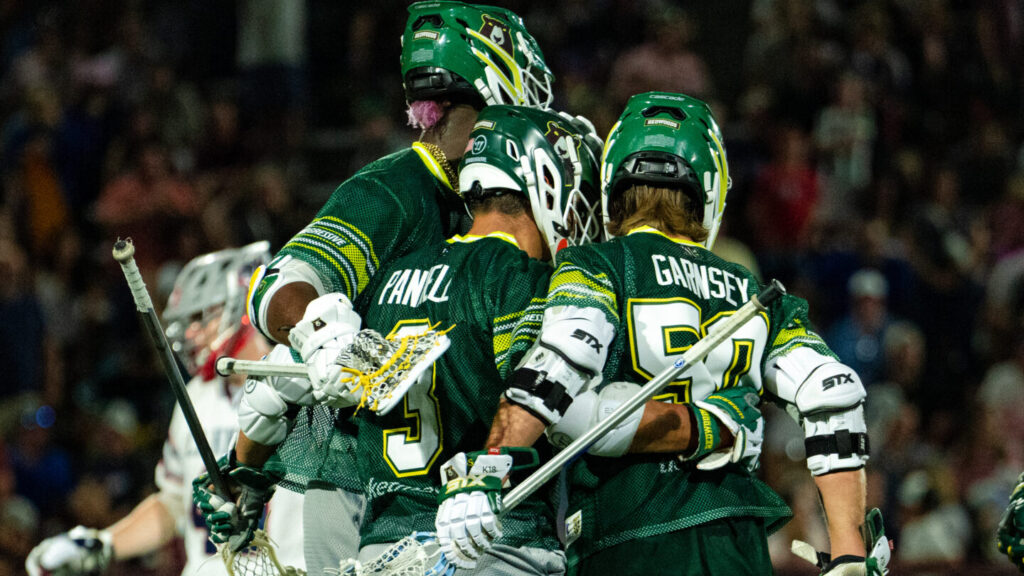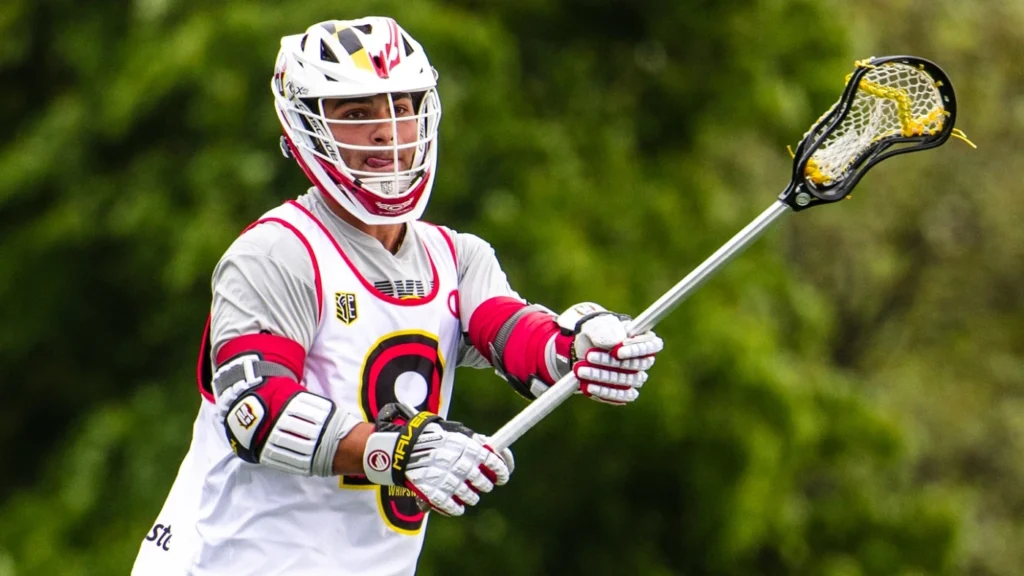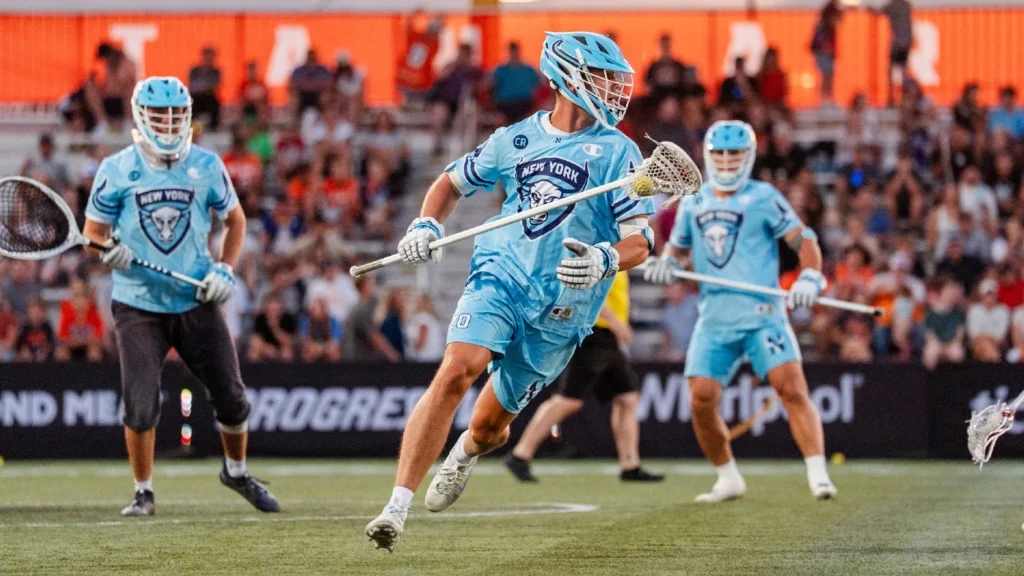
Inside the Redwoods’ Training Camp: Position Battles Set to Shape the Season Part 1
By Jerome Taylor
May 22, 2023
As the dust of this offseason’s transactions settles, the spotlight now shines on Albany, the stage for the Redwoods' 2023 PLL season opener against Atlas on June 3rd. But first, training camp - a crucial stage where players are vying for a spot on the 25-player roster.
With a wealth of world-class talent, top draft picks, and former all-Americans, the Redwoods' camp promises intense competition. Let's delve into the key areas where the battle for roster spots will be most fiercely contested.
Goalie: Decisive Duel for Redwoods' Resurgence
The goalie battle has the biggest ramifications on whether the Redwoods can rebound from their 4-6 2022. The competition is not just between Tim Troutner and Jack Kelly but also a battle against their own past performances. They have split time between the pipes since 2021, with Kelly playing in 16 games and Troutner in 13 since the ‘21 season.
And that’s because neither has separated themselves from the other. Last year, Kellly’s 46% save percentage was significantly higher than Troutner’s 36%. But frankly, neither of those numbers will be good enough to elevate the ‘Woods this season.
“I'm looking for somebody to step up and emerge,” Redwoods LC Head Coach and General Manager Nat St. Laurent said. “That was a position that as a staff we look at, and we know it has to improve… for us to be successful, we got to be able to stop the ball a little bit more effectively.”
Among the 13 goalies who played in the PLL last year, Kelly and Troutner ranked 11th and 13th, respectively, in save percentage.
To illustrate the impact of a higher save percentage, consider this: if Kelly had achieved a save percentage of 50%, he would have ranked 8th in the league. This would have translated to 77 goals allowed instead of 83, reducing his scores against average (SAA) to approximately 11 (give or take a few decimal points, depending on 2pt goals).*
Considering the Redwoods scored 11.4 points per game last year if either goalie can reduce their SAA to around 11 and increase their save percentage closer to 50%, the Redwoods could be well-positioned for a comeback from their 4-6 record in 2022.
“We're waiting for one of them to emerge. I have no idea who it's going to be. Quite frankly, I don't care. I just want one of those guys to step up,” St. Laurent said. “We've got a tremendous amount of confidence in them. So, we know one of them is going to emerge.”
Offensive Midfielder: Trimming the Talent
When you look at the Redwoods' 30-man roster, the talent in the offensive midfield section jumps off the page. And it’s also the area where the most challenging decisions will have to be made about who makes the 25-player roster.
The group is led by Myles Jones, Jules Heningburg, Charlie Bertrand, and Sergio Perkovic — all of whom have been all-stars or named to an annual Top 50 team. On top of those guys, Eli McLaughlin, Ryan Lee, and other listed attackmen will float up to play midfield.
“I haven't seen anything like this,” St Laurent said. “The ultimate goal was to try to go two or three deep at each position, to compare it to a football… at midfield, we’re eight deep.”
In professional lacrosse, unlike college, traditional midfield “lines” are less common on game day, when teams have to trim down to 19 dressed players. This typically means selecting the top 5 or 6 offensive threats from the midfield position.
“As a head coach, it is so stressful to try to put the right players together,” St. Laurent said.
“To explain to a guy that's a World Team or all-American or all-star player they're not in the rotation this week, those are things that these types of competitors don't ever hear.”
With all the talent, this offense will be responsible for raising the score-per-game average. The Redwoods’ registered a -10 score deficit last year (6th in the league). And as any budgeter knows, you can only improve a deficit in 2 ways: earn more or spend less, and doing a bit of both doesn’t hurt.
And with most of the ‘Woods draft capital spent on defense and faceoff depth, the vets on offense will have to put a little more in the bank.
For the younger players, like Cole Kirst and Anthony DeMaio, vying for a spot on the 25-man roster, versatility on offense, both with and without the ball, will be essential.
“You just got to find the guys willing to do what we're asking to do for the greater good of the offense and the team,” St. Laurent said. “All of these guys are willing to do it, so it's just going to be able to see who can perform the most.”
SSDM: Transition and Avoiding the Reduncancy Trap
The midfield position's depth and competition extend beyond offense, with the defensive midfield also brimming with talent.
Isaiah Davis-Allen, a six-year vet, spearheads the group. Joining him are Corey Kale, an undrafted signing from Hofstra, and Chris Merle, who is making a full-time return to lacrosse after a stint at Stony Brook playing both football and lacrosse. But before that, he was a defensive leader at midfield for Virginia during their 2021 NCAA championship run.
But that doesn’t tell the whole SSDM story, players like Brian Tevlin, this year’s second-round draft pick, and Nakeie Montgomery also have to fit in that rotation. St. Laurent calls Tevlin and Montgomery “transition specialists” and are more two-way than some other players at the position. The transition game, embodied in the team's training camp mantra "running in the woods," is a focal point for St. Laurent this year, making speed an essential trait for any player handling a short stick on defense.
Given Tevlin and Montgomery's anticipated defensive roles, the question of redundancy becomes particularly pertinent in the defensive midfield from a roster construction perspective.
*To illustrate the impact of a higher save percentage, let's consider Kelly with a hypothetical 50% save percentage. We calculate the total shots faced (approx. 154) by dividing total saves (71) by the original save percentage (46.1%). With a 50% save percentage, he would have saved half of those shots (77), thus allowing 77 goals instead of 83, reducing his scores against average (SAA) to approximately 11.




